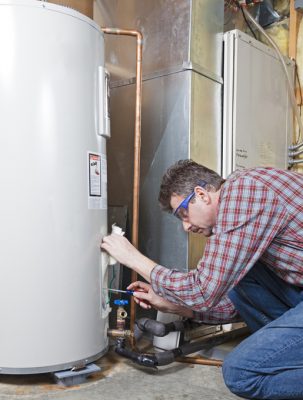Ensuring Longevity of Your Home's Hot Water System: Maintenance TipsStep-by-Step Guide to Maintaining Your Home's Hot Water System
Ensuring Longevity of Your Home's Hot Water System: Maintenance TipsStep-by-Step Guide to Maintaining Your Home's Hot Water System
Blog Article
Have you been looking for additional info concerning What Kind of Maintenance Do Water Heaters Need??

Warm water is vital for day-to-day convenience, whether it's for a rejuvenating shower or washing meals. To ensure your hot water system runs successfully and lasts longer, normal maintenance is crucial. This article offers sensible suggestions and understandings on just how to maintain your home's hot water system to stay clear of disruptions and expensive fixings.
Introduction
Keeping your home's hot water system may appear challenging, yet with a few easy actions, you can ensure it operates efficiently for years to find. This guide covers every little thing from comprehending your warm water system to DIY maintenance pointers and knowing when to contact expert aid.
Importance of Preserving Your Warm Water System
Normal maintenance not only prolongs the life-span of your hot water system yet additionally ensures it runs efficiently. Overlooking upkeep can bring about lowered efficiency, higher energy expenses, and also early failure of the system.
Signs Your Hot Water System Requirements Upkeep
Recognizing when your hot water system requires focus can prevent major problems. Watch out for indicators such as irregular water temperature level, strange noises from the heating unit, or rustic water.
Flushing the Hot Water Heater
Purging your hot water heater gets rid of debris build-up, improving efficiency and lengthening its life.
Monitoring and Replacing Anode Rods
Anode rods avoid rust inside the storage tank. Checking and replacing them when worn is important.
Complicated Problems Needing Specialist Aid
Instances consist of significant leakages, electric problems, or if your water heater is regularly underperforming.
Regular Specialist Upkeep Perks
Expert upkeep can include extensive assessments, tune-ups, and guaranteeing compliance with safety standards.
Inspecting and Adjusting Temperature Level Settings
Adjusting the temperature setups makes certain optimal efficiency and safety and security.
Do It Yourself Tips for Maintenance
You can carry out several upkeep jobs on your own to keep your hot water system in leading problem.
Checking for Leaks
Regularly examine pipes and links for leakages, as these can result in water damages and greater bills.
Understanding Your Warm Water System
Prior to diving into upkeep jobs, it's valuable to understand the standard parts of your hot water system. Generally, this consists of the hot water heater itself, pipelines, anode poles, and temperature level controls.
Regular Monthly Upkeep Tasks
Regular month-to-month checks can help capture minor issues prior to they intensify.
Testing Stress Relief Valves
Testing the stress relief valve ensures it operates properly and avoids extreme stress accumulation.
Shielding Pipelines
Insulating warm water pipes lowers warm loss and can conserve power.
When to Call a Professional
While do it yourself maintenance is useful, some concerns need professional know-how.
Conclusion
Routine maintenance of your home's hot water system is necessary for efficiency, long life, and cost financial savings. By following these ideas and knowing when to look for professional assistance, you can make certain a reputable supply of warm water without unexpected interruptions.
How to Maintain an Instant Hot Water Heater
Before tinkering with your hot water heater, make sure that it’s not powered on. You also have to turn off the main circuit breaker and shut off the main gas line to prevent accidents. Also turn off the water valves connected to your unit to prevent water from flowing into and out of the appliance. 2. When you’re done, you have to detach the purge valves’ caps. These look like the letter “T” and are situated on either side of the water valves. Doing so will release any pressure that has accumulated inside the valves while at the same time avoid hot water from shooting out and burning your skin. 3. When the purge valves’ caps are removed, you have to connect your hosing lines to the valves. Your unit should have come with three hoses but if it didn’t, you can purchase these things from any hardware or home repair shops. You can also get them from retail stores that sell water heating systems. Read the user’s manual and follow it to complete this task properly. When the hosing lines are connected, open the purge port’s valves. 4. You should never use harsh chemical cleaners or solutions when cleaning your unit. Make use of white vinegar instead. It should be undiluted and you’ll probably use about 2 gallons. 5. Now flush your water heater. This task should probably take about 40 minutes. We can’t give you specific directions for this because the procedure is carried out depending on the type, model and brand of your heater. With that being said, refer to the user’s manual. 6. When you’re done draining the unit, you have to turn off the purge port valves again. Remove the hosing lines that you earlier installed on each of the water valves. Put the valve caps (purge port) back in their respective places and be very careful so as not to damage the rubber discs that are found inside these caps. 7. Now that everything’s back in place, check your user’s manual again to find out how to reactivate your water heating system. 8. Once it is working, turn one of your hot water faucets on just to let air pass through the heater’s water supply pipes. Leave the tap on until water flows smoothly out of it. https://www.orrplumbing.com/blog/2014/september/how-to-maintain-an-instant-hot-water-heater/

I was introduced to that editorial on Tips For Maintaining Your Hot Water Heater from a pal on another web address. Enjoyed reading our piece? Please quickly share it. Let somebody else discover it. Bless you for being here. Kindly stop by our website back soon.
Book Report this page